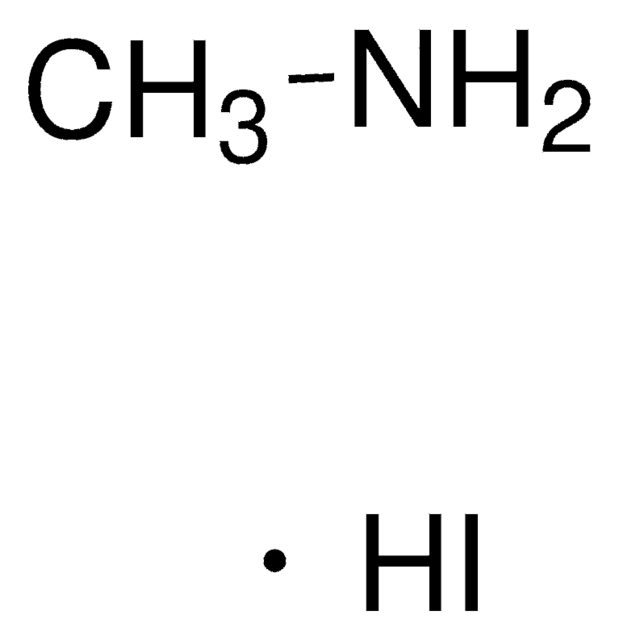Wichtige Dokumente
923192
Spiro-TTB
≥99% (HPLC)
Synonym(e):
2,2′,7,7′- Tetrakis(N,N′-di-p-methylphenylamino)-9,9′-spirobifluorene, 2,2′,7,7′-Tetra(N, N-di-tolyl)amino-spiro-bifluorene, 2,2′,7,7′-Tetra(N,N-di-p-tolyl)amino-9,9-spirobifluorene, 2,2′,7,7′-Tetra(N,N-ditolylL)amino-9,9-spiro-bifluorene, 2,2′,7,7′-Tetrakis(di-p-tolylamino)-9,9′-spirobi[fluorene], 2,2′,7,7′-Tetrakis(di-p-tolylamino)spiro-9,9′-bifluorene, N2,N2,N2′,N2′,N7,N7,N7′,N7′-Octa-p-tolyl-9,9′-spirobi[fluorene]-2,2′,7,7′-tetraamine
About This Item
Empfohlene Produkte
Beschreibung
PL:409 nm (in THF)
TGA:> 360 °C (0.5% weight loss)
Tg: 146 °C
Qualitätsniveau
Assay
≥99% (HPLC)
Mol-Gew.
average mol wt 1097.43 g/mol
Grünere Alternativprodukt-Eigenschaften
Design for Energy Efficiency
Learn more about the Principles of Green Chemistry.
sustainability
Greener Alternative Product
Verlust
0.5% TGA, >360°C
Übergangstemp.
Tg 146 °C
Löslichkeit
THF: soluble
λmax
385 nm in THF
Energie der Orbitale
HOMO 5.2 eV
LUMO 1.9 eV
Grünere Alternativprodukt-Kategorie
, Enabling
Suchen Sie nach ähnlichen Produkten? Aufrufen Leitfaden zum Produktvergleich
Allgemeine Beschreibung
Anwendung
It has been successfully applied as transparent hole-transparent layer in solar cells, organic field-effect transistors (OFETs), and organic light emitting devices (OLEDs). In photovoltaics, spiro-TTB was used as organic hole selective layer between perovskite and the silicon cells, contributing to a 25.2% efficency perovskite/ silicon tandem solar cell. When used in OLEDs, spiro-TTB enabled applications in organic photodetectors (OPDs), imaging and lasing applications.
Lagerklassenschlüssel
11 - Combustible Solids
WGK
WGK 3
Flammpunkt (°F)
Not applicable
Flammpunkt (°C)
Not applicable
Hier finden Sie alle aktuellen Versionen:
Analysenzertifikate (COA)
Leider sind derzeit keine COAs für dieses Produkt online verfügbar.
Wenn Sie Hilfe benötigen, wenden Sie sich bitte an Kundensupport
Besitzen Sie dieses Produkt bereits?
In der Dokumentenbibliothek finden Sie die Dokumentation zu den Produkten, die Sie kürzlich erworben haben.
Unser Team von Wissenschaftlern verfügt über Erfahrung in allen Forschungsbereichen einschließlich Life Science, Materialwissenschaften, chemischer Synthese, Chromatographie, Analytik und vielen mehr..
Setzen Sie sich mit dem technischen Dienst in Verbindung.